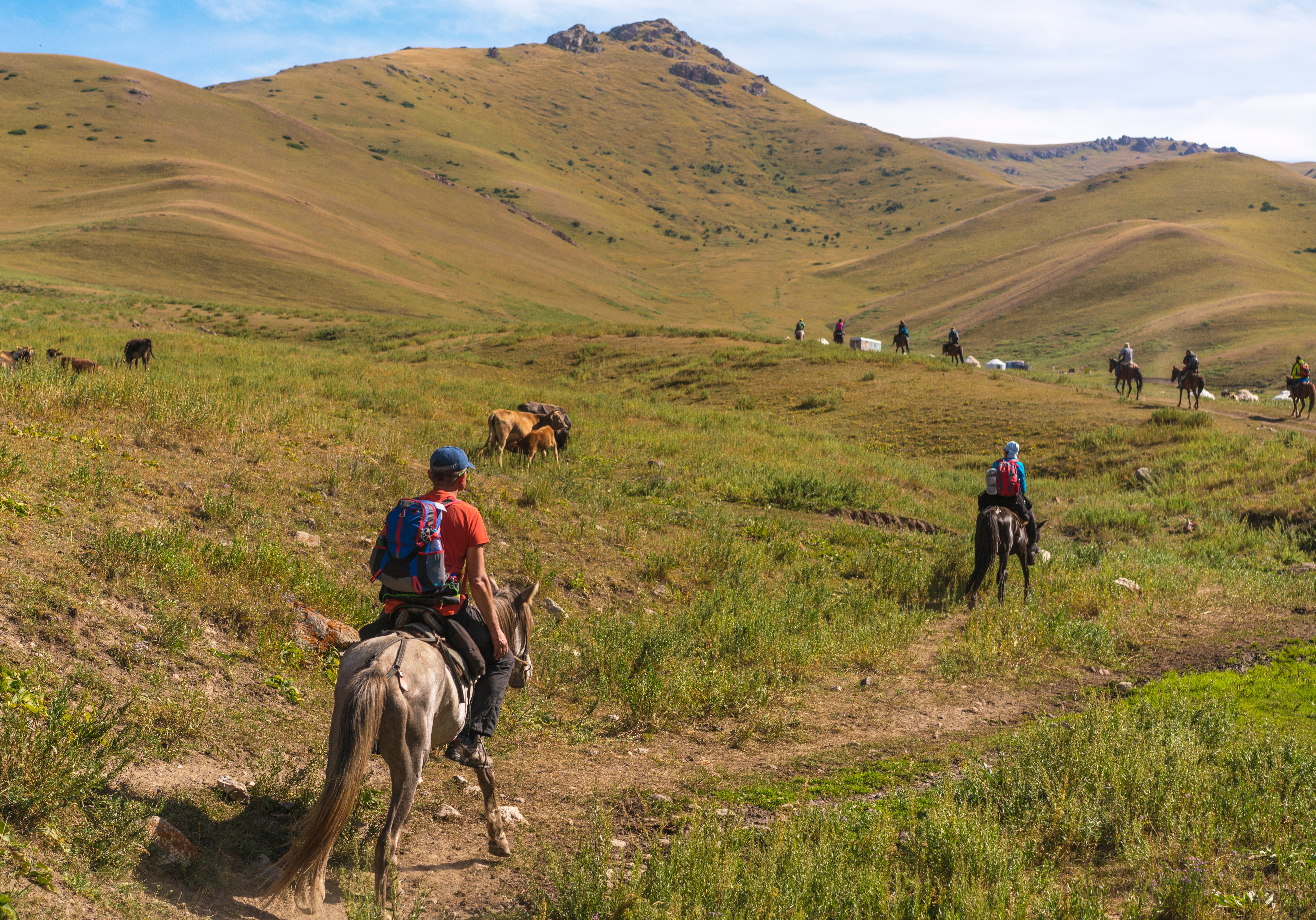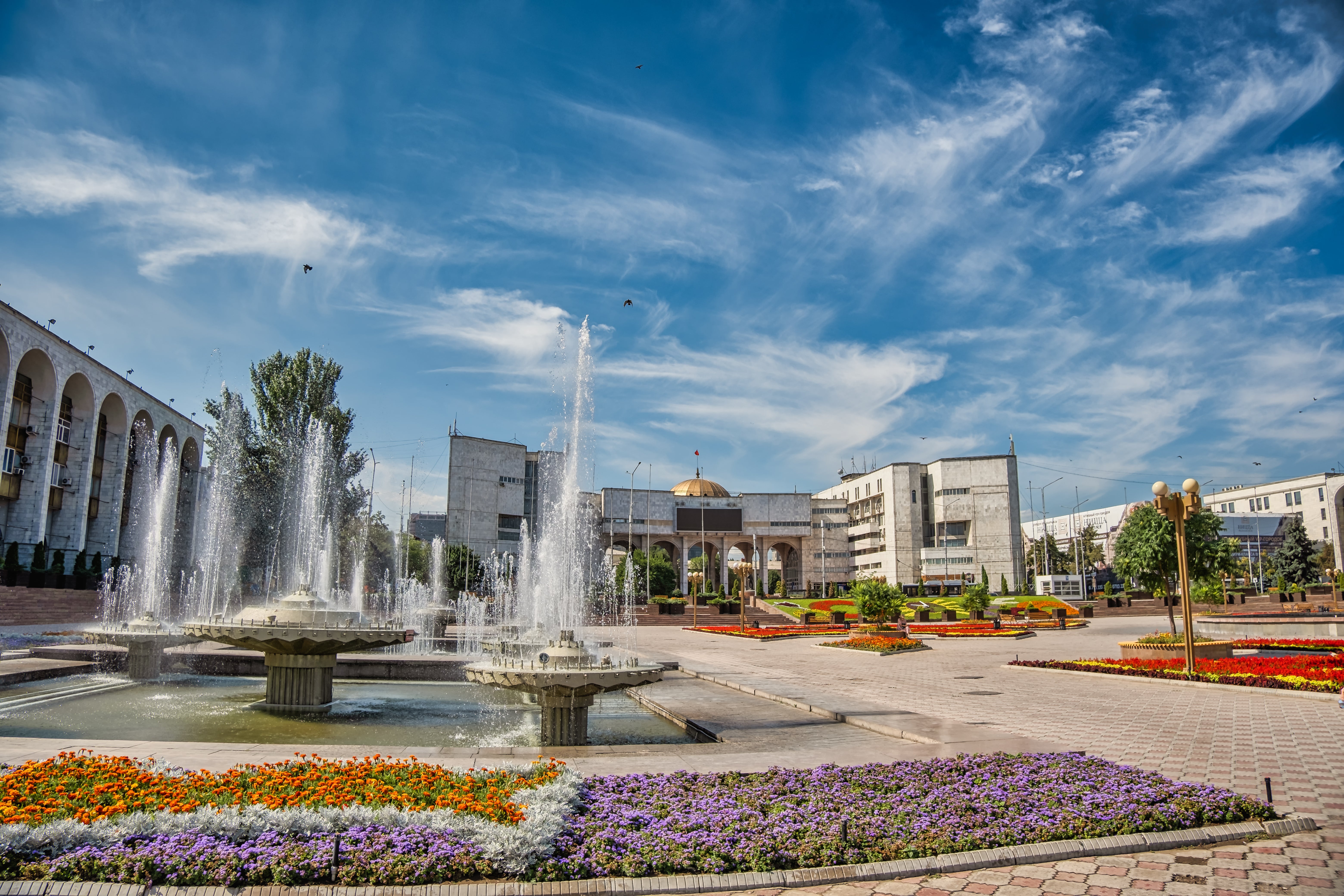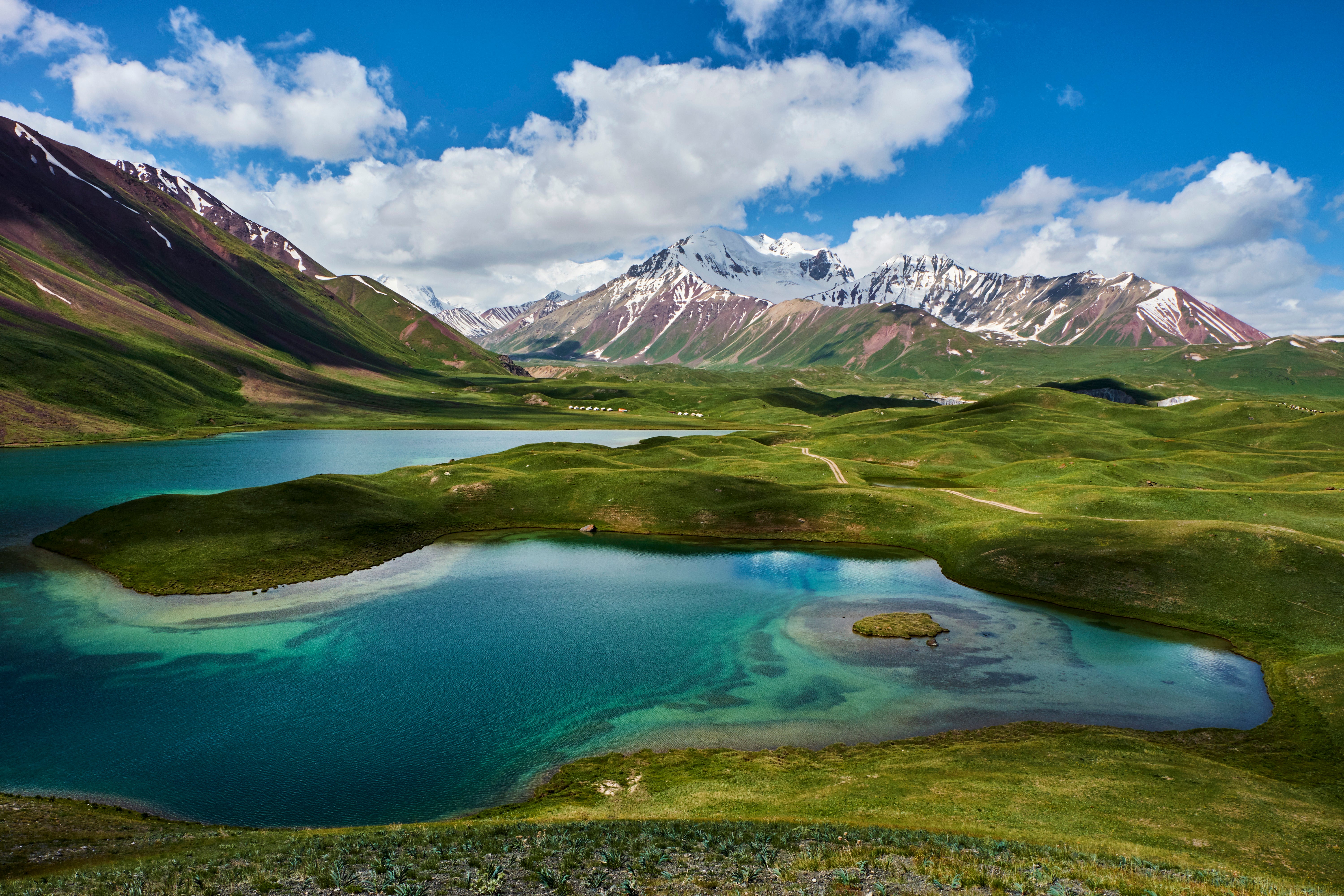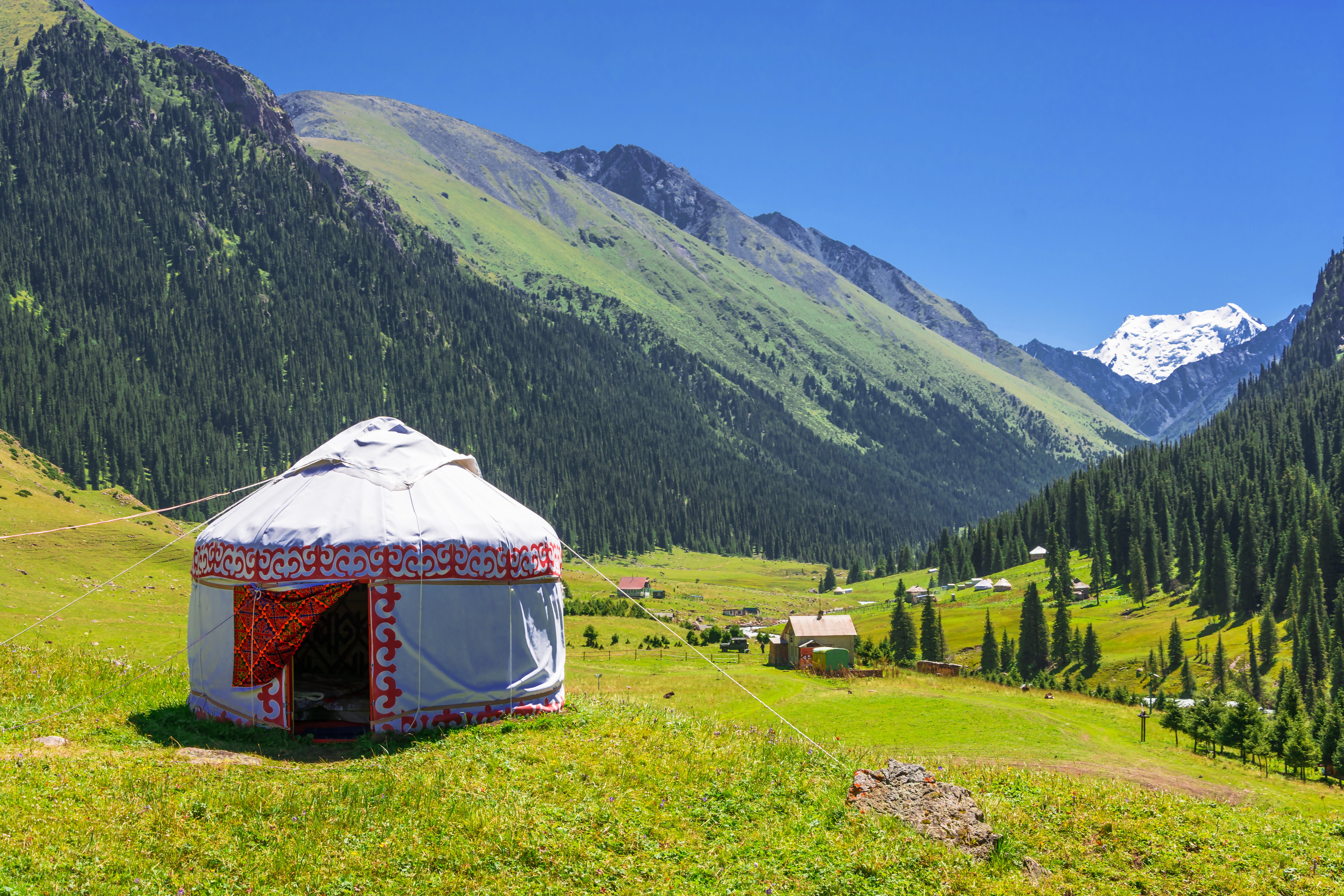
In Kyrgyzstan, the way of life has long been defined by horses. So central were they that the rhythms of each year were set not by the schedule of planting and harvest but by the passage through grazing routes that the bands of nomadic Kyrgyz would travel in search of fresh grass.
Wandering villages would mark the passing of time by which ancient way was being followed to pasture as the snow descended and then receded up the mountains that frame this land in the very heart of central Asia.
Even now, when its capital Bishkek is as much a jumble of multi-level shopping malls, neon signs and concrete office blocks as any city you will find in Kyrgyzstan’s neighbours, the lingering emotional bond between a Kyrgyz and horses remains strong.
A favoured drink remains fermented mare’s milk, called kumis. Prowess in riding is still a particularly prized personal attribute. And even everyday speech is littered with references to the historic relationship between the people and their horses.
It is little surprise, therefore, that the best way to see the country today is still on horseback.

Vast stretches of the country and its steppes are barely troubled by roads, meaning that the adventurous can set out for days on long journeys that take you through soaring mountains, by crystal-clear alpine lakes and across mile upon mile of undulating hills.
My ride was through part of the Kirghiz range, one of 158 mountain ranges that bisect this nation of six million Turkic-speaking people. With the Pamir mountain range to the south and the Tian Shen mountain range to the west, the Kirghiz range is among the country’s largest, the top of its mountains snow-capped even in the summer heat.
As we set off, our horses ambling through the early morning sun with the light casting the leaves of the forest around us into a kaleidoscope of greens, there was no sound but the occasional birdsong. The air was dry and clean; the trees spreading across the foothills of the mountain range before us like a blanket.
It was one of those places and one of those moments when the modern world, filled as it so often is with self-righteous bustle and its accompanying parroting cacophony, recedes not only physically but mentally.
There is just you, your horse and nature. Slowly but inescapably you too fall with each passing step into its ancient rhythm; a rhythm that has marked this place since people first arrived here, on horseback, as their tribes gradually moved west from Siberia and Altay before and during the time of Genghis Khan.
Kyrgyzstan did not exist on the map until the early 1990s after the end of the Soviet Union but its culture has existed for centuries before then. Now it is one of the easiest to experience in central Asia as the country has consciously sought to avoid much of the labyrinthian and bureaucratic entry requirements that can blight access to its neighbours.
The country has set itself up to welcome visitors. British passport holders simply get a visa on arrival with no prior organisation needed. When Covid struck, it was one of the first nations in the world to ditch quarantine requirements for tourists but rather established a network of mobile PCR testers to handle every visitor. It is therefore the perfect entry point to experience central Asia.
My visit started in Osh, a city just down from the Pamir mountains that in Soviet times marked the end of the highway that served as the main trade route between Russia and central Asia and has been a trading spot since Silk Road times.
That merchant spirit can be seen in the city’s Jayma Bazaar, one of the largest in the region and one that attracts sellers from as far afield as China, Tajikistan and Kazakhstan to sell their wares from the upturned shipping containers that house many of its stalls.
It is a place where people have come from miles around to trade and barter for 2,000 years. Today its aisles still host stalls heaped with spices and passageways lined with blacksmiths beating iron into spades or other utensils as it has for centuries.
You could spend hours lost in its labyrinthian layout. One moment you are surrounded by lines of polyester knock-off Premier League football strips or the flashing lights of imported Chinese toys that spill over tables.
The next you are transported back in time to a world where berries and herbs fill giant bowls for the buyer to scoop their purchase out of with worn wooden trowels. Animal carcasses the size of a car door hang from metal hooks, the blood dripping onto the paving stones beneath.
My time in Kyrgyzstan ended in the capital, Bishkek, hundreds of miles to the north where the stark Soviet architecture of its Communist past mixes with the flashing lights of the newer metropolis that now sprouts alongside it.

Here you can dine at five-star Chinese restaurants as smart – and pricey – as any you might find in Shanghai, or watch the young dance to bands in American-themed bars where elaborate cocktails are served with sparklers poking from the tops of the glasses.
But what made Kyrgyzstan special, and so welcome a place to visit, is what I witnessed in neither of those cities, enjoyable though they were.
Rather it is what lies outside the urban areas. There the sight of people remains often a rarity and the landscape is a tapestry of craggy mountains steep and stark that fall away into seemingly endless grass-covered steppes.
At Issyk-Kul, one of the world’s largest lakes ringed by the Tian Shan mountains, I sweated in an isolated wooden banya perched on the edge of the shoreline as our attendant fed lake water onto the hot coals to fill the sauna, before diving into the lake’s icy embrace.

At the mountain of Suleimen Too, at Osh, I climbed its craggy sides to climb into the caves that descend deep into its interior. These have been sacred for as long as people have known of them and I saw where sacrifices were conducted in the past, and the sacred stones that women come to visit still today in the belief it may increase their fertility.
In Baktu-Dolonotu I watched as local horsemen gathered from the surrounding region to compete in a game of kok-boru, or as it is more colloquially known ‘headless goat polo’, in which two teams on horseback compete to get the carcass of a goat into their opponent’s goal.
This is a game which involves the carcass, its head and legs removed and the cuts sown up to prevent entrails falling out, being competed over by two teams. The rules strictly prohibit the use of knives or guns but few other rules appear to apply.
It remains supremely violent with the action seeming to involve the players driving the sides of their mounts against their opponents in confused scrums before suddenly, and to be honest utterly mysteriously, the carcass suddenly becomes free and a solitary horseman emerges from the frenzy to gallop at full pelt to toss it down the well which served as their opponent’s goal.
So popular is the game in not only Kyrgyzstan but many countries in central Asia that it has its own World Cup – the biannual World Nomad Games – when teams come from across central Asia battle it out at kok-boru, as well as other traditional sports such as falconry, wrestling and archery.
The last three have been held in Kyrgyzstan but the next is in Iznik in Turkey and starts at the end of September this year. As many as 100 countries are expected to be represented, and more than 3,000 competitors across all the disciplines are being planned for.

More peacefully, near Suusamir, I saw the landscape broken only by the white dots of small clusters of yurts, each housing a family as the villages moved along the grazing paths like their ancestors.
Taken inside one, the ground was covered in layers of rugs as a fire in its centre burped out bursts of smoke that rose out of the chimney hole cut out of the centre of its canvas roof.
I ate gok cuchvara, dumplings stuffed with a locally-grown green that tastes like spinach, and giants samsas stuffed with lamb and onion and topped with sesame seeds to warn the unwary that it is spiced with chilli.
I ate horse, for the Kyrgyz see the animal not just as a mount but a meal and no special event can be marked without one being killed and cooked. The meat was served with bowls of pickled salads, kidney beans and cabbage, and washed down with kumis mare’s milk, which was slightly sour but refreshing and still warm from its milking.
At night, free of any light pollution around us, the stars in the steppes were always full and close.
Go and visit Kyrgyzstan now. It is only a simple flight from Istanbul and the government’s commitment to developing tourists means it will not stay this empty for long.
But, for now, it remains as it was: a place where you can feel the rhythm of life as it once was and still can be. Remind yourself of what that is like while you still can.







